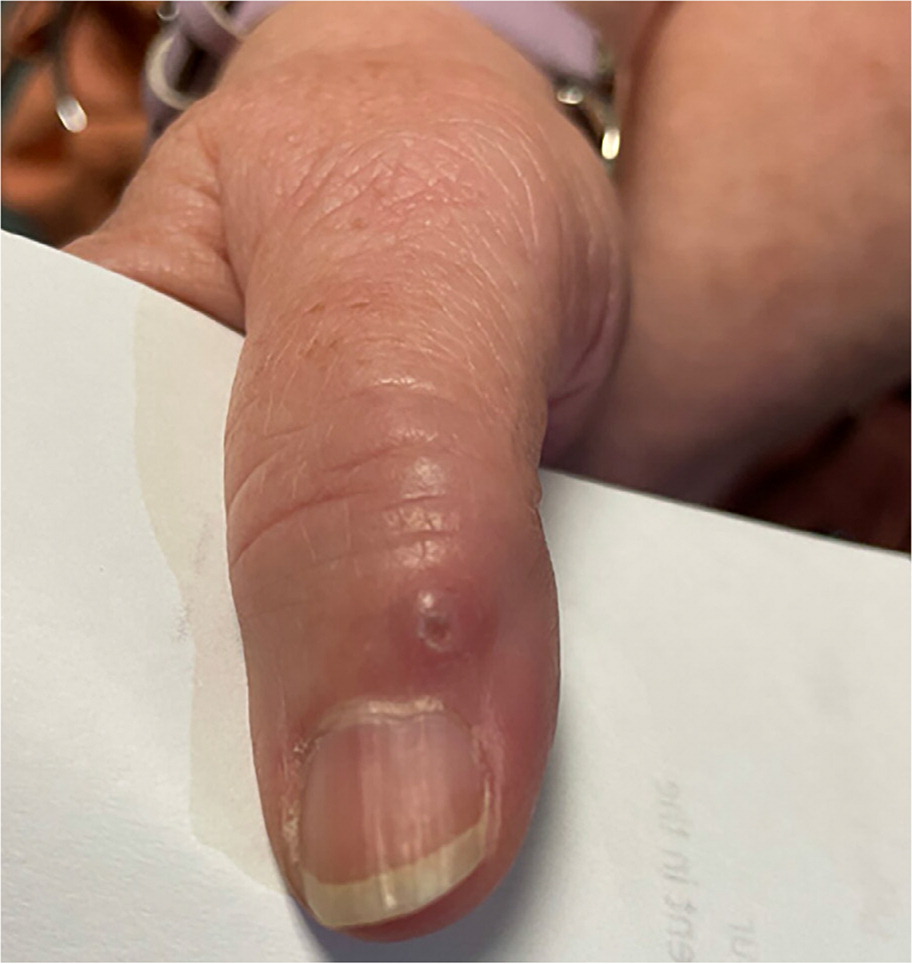
Painful Finger Lesion
Am Fam Physician. 2024;110(6):637-638
Author disclosure: No relevant financial relationships.
A 61-year-old woman presented with a painful cystic lump on the dorsum of her right thumb. The lump had been present for about 1 year and had slowly increased in size. In the week prior, it became painful and firm. The patient had no other symptoms or lesions. She did not work in a garden, have pets, or experience any trauma to the finger. The lesion had not been treated.
Examination revealed a 3- to 4-mm, raised lesion. It was mildly erythematous with an overlying scab (Figure 1).

QUESTION
Based on the patient's history and physical examination, which one of the following is the most likely diagnosis?
A. Cutaneous sporotrichosis.
B. Myxoid cyst.
C. Paronychia.
D. Verruca vulgaris.
DISCUSSION
The answer is B: myxoid cyst, also known as a myxoid pseudocyst or digital mucous cyst. These benign growths typically present as a single nodule that is translucent or the same color as the surrounding skin. Lesions can also be small, shiny, papular, and fluid-filled. They typically occur on the dorsal aspect of the finger, between the distal interphalangeal joint and the proximal nail fold.1 When the cyst develops close to the proximal nail fold, pressure on the underlying nail matrix can create a groove that runs lengthwise along the nail plate.
Subscribe
From $165- Immediate, unlimited access to all AFP content
- More than 130 CME credits/year
- AAFP app access
- Print delivery available
Issue Access
$59.95- Immediate, unlimited access to this issue's content
- CME credits
- AAFP app access
- Print delivery available

